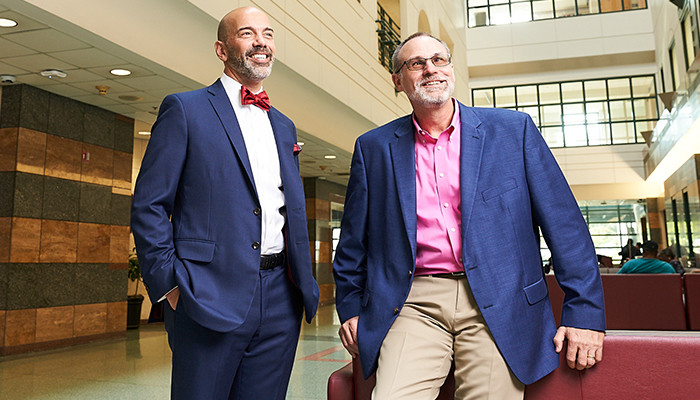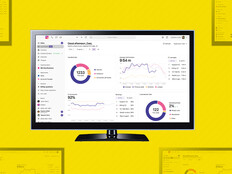After he finished working nearly a week’s worth of consecutive night shifts, Timothy Buchman, medical director of the Electronic ICU program at Emory Healthcare in Atlanta declared, “We need to find a way to turn night into day.”
Through the magic of collaboration tools, the hospital system did just that.
The eICU already relied on video collaboration and remote monitoring tools to assist hospitals around the state in areas that have trouble staffing enough doctors and nurses overnight.
But Emory moved the program forward — about 11,000 miles, to be exact — through a partnership with Royal Perth Hospital in Australia. Since early 2019, Emory has sent doctors and nurses to Perth for six- to 12-week stints, allowing them to remotely staff the night shift of Emory’s eICU Center during Perth’s daylight hours.
The arrangement isn’t just for convenience. “There are very significant, life-changing impacts from this,” says Cheryl Hiddleson, director of Emory’s eICU Center, noting that research connects night shift work to a variety of negative health outcomes, including cardiovascular disease, diabetes and obesity. “That’s why I have five physicians and five nurses who’ve been back repeatedly. They like the nighttime work. They just don’t want to have to do it at night.”
SUBSCRIBE: Become an Insider for access to exclusive HealthTech videos, white papers and articles.
Collaboration technologies are having a major impact on healthcare organizations, which are increasingly relying on videoconferencing tools, secure texting solutions and unified collaboration suites to connect clinical and business teams.
“Healthcare organizations are using collaboration technologies to communicate in real time, to brainstorm and to integrate videoconferencing and other tools in HIPAA-compliant solutions,” says Wayne Kurtzman, research director for social media and collaboration at IDC. “They’re looking to do more with less, and do it better than ever before, and sometimes that requires cross-silo communication.”
Constant Connection Is Enabled by Grady Health System
At Grady Health System in Atlanta, clinicians and business teams use a variety of collaboration tools. The technologies are so pervasive that it’s sometimes difficult to draw distinct lines between those and other avenues, such as mobile solutions, healthcare management software and telehealth systems.
Glenn Hilburn, Vice President of Clinical Systems at Grady Health System, says collaboration tools are key to employee engagement and satisfaction.
Each Grady clinician carries a mobile device, for example. These smartphones give users the ability to remotely connect to the hospital’s electronic health record system, as well as to expedite patient care tasks such as scanning medications and verifying identities.
But doctors and nurses also use their mobile devices to send secure text messages and collaborate around patient care. All told, Grady clinicians send between 30,000 and 40,000 secure text messages each month, often embedding patient images in the messages.
“Our goal was to untether clinicians from hard-wired workstations, so that they would have more flexibility, have more face time with their patients and be able to provide the care that patients need,” says Glenn Hilburn, vice president of clinical systems for Grady.
Grady Health System also makes extensive use of the collaboration tools offered by Office 365, and will soon implement Microsoft Teams. The organization is undergoing a large-scale performance improvement initiative, with teams working to identify opportunities to reduce stay length, create a better patient experience and improve other processes and outcomes. The teams are using SharePoint to collect and share that information, creating a central repository where team members can quickly check the status of a given area and contribute ideas.
Implementing collaborative workflows isn’t merely a matter of deploying the right technologies. “Collaboration is very much culture-based,” Kurtzman says. “You need a focus on a shared purpose, and you need trust. People don’t want to share their best ideas if they feel there’s a risk of ridicule.”
Within Grady Health System’s IT group, collaboration tools such as Cisco Webex (along with a VPN connection and multifactor authentication) also enable a policy that allows employees to work from home one day each week.
“It’s very popular,” says Hilburn. “In a competitive space like IT, that’s the type of policy that you need to remain competitive with other organizations in your area. It’s an expectation in IT that you have the ability to work remotely as your schedule allows, and these collaboration tools are important for boosting employee engagement and satisfaction.”
Video Conferencing Promotes Face to Face Interaction
Video collaboration tools are also becoming essential within many healthcare organizations. At Bozeman Health in Montana, clinicians use Cisco video endpoints and Zoom collaboration software to facilitate remote participation in continuing medical education.
“If a doctor can’t make it to the meeting in person, a lot of times they’ll want to watch from their desk in between seeing patients,” says Chris Gordon, network administrator for the organization. Bozeman Health started using Zoom in early 2019. “In the past, if they wanted to attend, it had to be in person,” Gordon says.
The organization uses the Cisco TelePresence SX80 Codec solution, which delivers end-to-end high-definition video, alongside cameras from both Cisco and Vaddio. Bozeman Health also recently invested in a Cisco camera bar that integrates with the SX80 solution and offers the ability to automatically zoom in on whoever is speaking.
Bozeman Health’s shared services departments, executive team and other business units also make extensive use of video collaboration. “We in the IT department interviewed a potential candidate just last week,” Gordon says. “You can see the person and how they respond to questions.”
Support from leadership is often crucial to the success of a video collaboration initiative. That hasn’t been a problem at Bozeman Health, where executives led the push for Zoom and frequently use the tool to remotely participate in high-level meetings and to share documents and slide decks.
“Zoom provides more availability to conduct meetings when our leaders are at other locations to ensure their teams have the support they need,” Gordon says.
LEARN MORE: Read a CDW white paper on how collaboration tools improve care delivery.
The Blurred Line Between Collaboration and Telehealth
When tools like video, persistent chat or file sharing are used to connect clinicians and business teams, they’re called “collaboration.” And when collaboration technologies are used to deliver patient care, they’re called “telehealth.” But the line between the two can get blurry.
One of the highest-impact uses of collaboration technologies at Grady Health System is the organization’s mobile stroke unit. That solution does involve extensive clinician-to-clinician collaboration, but because it revolves around patient care, most would likely classify it as a telehealth initiative.
Terms overlap even more at Emory Healthcare, where a multiprotocol label-switching connection allows clinicians to work from Australia, but where most of the technology — such as cameras, speakers and monitors — is aimed at improving outcomes for ICU patients.
Regardless of their location, Emory clinicians monitor patient data in search of alarming trends, and can initiate video sessions to assist with care delivery. “If I wanted to count the number of eyelashes on your left eyelid, it would be very easy to do so with the cameras we have,” says Buchman. “The resolution is that good.”
Kurtzman predicts that collaboration and telehealth solutions will converge even more. “Those two categories are coming together,” he says. “What if telehealth could leverage the knowledge of the collaboration environment while also respecting privacy? Then you’d have a new set of data that artificial intelligence and machine learning tools could leverage in real time. It may take a while, but that’s the direction we’re going.”
Photography by Ben Rollins; 6okean/Getty Images; Bannosuke/Getty Images











